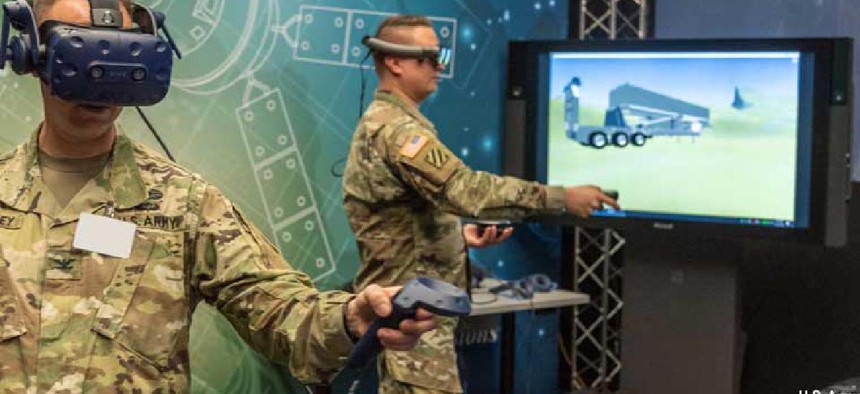
Army modernization under scrutiny amid planned budget cuts
Lawmakers worry the Army's modernization efforts could be undermined by a flat budget proposal for fiscal 2022.
Lawmakers are worried the Army's modernization efforts could be undermined by budget cuts while questioning whether the service can meet ambitious priorities like updating its tactical communications network.
Overall, the Army is seeking $173 billion for fiscal 2022 – a dip of $3.6 billion from 2021 enacted levels.
"We all tend to look at where we are at today, and I'm concerned right now with the trends that are out there, where we're going to be with budget cuts in the near future," Sen. Jim Inhofe (R-Okla.), ranking member for the Senate Armed Services Committee, said during an Army budget hearing on June 15.
Army Chief of Staff Gen. James McConville said that despite budget constraints, the service has focused on science and technology investments and priorities, but it would like more funding to modernize legacy weapons systems.
"The budget gives us the most efficient capability when it comes to readiness.... We have to modernize the Army. Every 40 years, the Army has to transform: It did in 1940 right before World War II, it did in 1980.... Quite frankly, I think in 2020 we must do the same," he said.
"So we have done all we can, the secretary and myself, to protect the modernization of the Army, and we believe we must do that."
Army Secretary Christine Wormuth concurred, adding that despite those efforts the service was still "under stress" in some areas, including in air defense.
"We are in a very, very, very tough international security environment, there is no shortage of threats," she said. "We are still under stress, particularly in certain areas like air defense as you know, so we're going to be strong advocates going into the future budget discussions."
However, Sen. Jack Reed (D-R.I.), the chairman of the Senate Armed Services Committee, questioned the Army's modernization plans in an opening statement, saying that priority areas, such as long-range precision fires and the communications network were "ambitious and far-sighted objectives, but we must acknowledge that the Army has historically struggled to effectively modernize."
The Army has been working to change that through its acquisition process, focusing on developing prototypes with soldier feedback before developing requirements and going into production. But there are still barriers to that, according to Douglas Bush, the Army's acting assistant secretary for Acquisition, Logistics and Technology.
"That transition from prototyping, at different levels of fidelity, to actual production is the difficult part of this new approach," Bush said during a separate SASC hearing on Army modernization June 15.
Bush said the acquisitions office is working with Army Futures Command to make sure the "handovers" are planned in advance and the teams work together throughout the process "to make sure it's not being thrown over the fence" and done in a way that's "responsible and properly tested."
But there are funding challenges for the testing ranges -- which the Army has increasingly relied on as it tests prototyped technologies for its Project Convergence exercises.
Sen. Mark Kelly (D-Ariz.) said he was concerned that test ranges, such as Yuma Proving Ground that hosted the Army's first Project Convergence last year, were losing funding at a critical point in the Army's modernization plan and that the innovation the Army is looking for will be reliant on rigorous testing of equipment which needs facilities to support that.
"These are premier testing sites for the advanced systems that will modernize America's army. It is critical that we not only invest in programs but in range infrastructure -- it's often the thing that's left out," Kelly said.
This article first appeared on FCW, a Defense Systems partner site.
